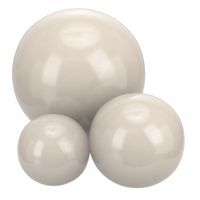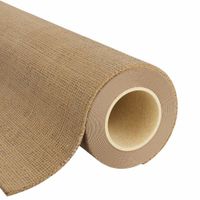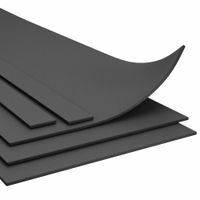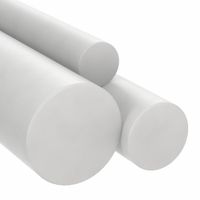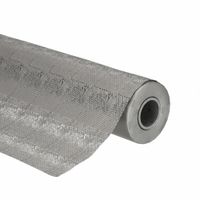Call +(254) 703 030 000 / 751 483 999 / 721 704 777
- Home
- Raw Materials
.....Read More
Frequently Asked Questions
What are bronze shafting and their uses?
Bronze shafting refers to solid or hollow cylindrical bars made from various bronze alloys, primarily copper-tin or copper-tin-zinc compositions. These alloys offer excellent corrosion resistance, good strength, and superior wear properties, making them suitable for demanding environments.
Bronze shafting is widely used in marine applications due to its resistance to saltwater corrosion, often found in propeller shafts, rudder stocks, and pump components. In industrial machinery, it's used for bearings, bushings, and gears where low friction and durability are crucial. Its non-sparking properties also make it ideal for use in potentially explosive atmospheres, such as in oil and gas industries.
What types of raw materials are used in MRO products?
MRO (Maintenance, Repair, and Operations) products utilize a diverse range of raw materials depending on their specific application. Common materials include various metals like steel, aluminum, copper, and brass for fasteners, fittings, and machine parts. Plastics and polymers, such as PVC, polypropylene, and nylon, are widely used in hoses, seals, and protective equipment. Rubber is essential for gaskets, O-rings, and belts. Additionally, chemicals like lubricants, solvents, and cleaning agents form a significant category. Abrasives, ceramics, and composites are also employed in specialized MRO items. The choice of raw material is dictated by factors like durability, chemical resistance, flexibility, and cost.
Where can I buy high-quality alloy steel for manufacturing?
High-quality alloy steel for manufacturing can be sourced from various reputable suppliers. Specialty metal distributors and industrial material suppliers are excellent starting points, as they often carry a wide range of alloys with detailed specifications and certifications. Additionally, direct partnerships with steel mills that specialize in alloy production can offer competitive pricing and custom orders for large-scale manufacturing needs. Online B2B marketplaces and industry trade shows are also valuable resources for discovering new suppliers and comparing offerings. When selecting a supplier, prioritize those with strong quality control, adherence to industry standards, and a proven track record in delivering consistent, high-grade materials.
What are the best conductive metals for electrical parts?
The best conductive metals for electrical parts are primarily silver, copper, and gold. Silver is the most electrically conductive of all metals, making it ideal for specialized applications requiring maximum efficiency. Copper is widely used due to its excellent conductivity, ductility, and affordability, making it a staple in wiring, circuits, and motors. Gold, while less conductive than silver or copper, is highly valued for its corrosion resistance and reliability in extreme environments, often used in connectors and delicate electronic components where long-term stability is crucial. Aluminum is also used, especially in power transmission, due to its lighter weight and lower cost, despite being less conductive than copper.
How is ceramic used in industrial applications?
Ceramics are vital in industrial applications due to their exceptional properties. Their high hardness and wear resistance make them ideal for cutting tools, abrasives, and wear parts in machinery. Excellent heat resistance allows their use in furnace linings, thermal insulation, and components in high-temperature engines. Chemically inert, ceramics are employed in corrosive environments for pumps, valves, and chemical processing equipment. Their electrical insulation properties are crucial for spark plugs, insulators, and electronic substrates. Furthermore, some advanced ceramics exhibit piezoelectricity or superconductivity, opening doors for sensors, actuators, and specialized electronic devices, demonstrating their diverse and critical roles across various industries.
What are the benefits of using fiberglass over metal?
Fiberglass offers several advantages over metal, particularly in applications where weight, corrosion, and electrical conductivity are concerns. It is significantly lighter than most metals, leading to improved fuel efficiency in vehicles and lower structural loads in construction. Unlike metal, fiberglass does not corrode or rust, making it ideal for marine, chemical, and outdoor environments. It is also a non-conductive material, providing excellent electrical insulation, which is crucial for electrical enclosures and components. Additionally, fiberglass boasts high strength-to-weight ratios and design flexibility, allowing for complex shapes and customization.
What types of plastics are commonly used for engineering?
Common engineering plastics include: * **Polycarbonate (PC):** Known for its high impact strength, transparency, and heat resistance. Used in protective gear, CDs/DVDs, and automotive parts.
* **Acrylonitrile Butadiene Styrene (ABS):** Offers good impact resistance, toughness, and rigidity. Commonly found in consumer electronics, automotive interiors, and toys (e.g., LEGO bricks).
* **Nylon (Polyamide - PA):** Valued for its strength, wear resistance, and low friction properties. Utilized in gears, bearings, and automotive engine components.
* **Polyoxymethylene (POM) / Acetal:** Provides excellent stiffness, low friction, and dimensional stability. Used for precision parts like gears, bearings, and fasteners.
* **Polyethylene Terephthalate (PET):** While widely known for bottles, its engineering grade offers good strength and dimensional stability.These plastics are chosen based on specific application requirements for strength, durability, temperature resistance, and processing characteristics.
What is the use of felt in MRO application?
Felt is widely used in Maintenance, Repair, and Operations (MRO) applications due to its versatile properties. It serves as an effective material for sealing, particularly in preventing leaks of oils, greases, and other fluids in machinery and equipment. Its excellent sound and vibration dampening capabilities make it ideal for reducing noise and absorbing shocks in industrial settings. Felt is also utilized for filtration, trapping particles and contaminants to maintain the cleanliness and efficiency of systems. Furthermore, its abrasive resistance and cushioning properties make it suitable for polishing, buffing, and protecting delicate surfaces during MRO tasks.
What is the role of stainless steel in medical and food-processing industries?
Stainless steel plays a crucial role in medical and food-processing industries due to its unique properties. Its high corrosion resistance, especially to sterilization agents and cleaning chemicals, prevents contamination and ensures hygiene, vital in healthcare settings for surgical instruments and implants. In food processing, stainless steel's non-reactive surface prevents flavor alteration and bacterial growth, making it ideal for equipment like tanks, pipes, and processing machinery. Its durability and ease of cleaning also contribute to maintaining sterile environments and meeting strict regulatory standards, ensuring product safety and quality in both sectors.
What are the applications of wire cloth in filtering and sorting?
Wire cloth is extensively used in filtering and sorting across various industries due to its precise and consistent mesh openings. In industrial filtration, it serves as a crucial component in pressure filters, strainers, and sieves for separating solids from liquids or gases. This includes applications in chemical processing, oil and gas, and water treatment, where it ensures purity and prevents contamination. For sorting, wire cloth is integral to screening machines and vibratory separators, classifying materials by particle size. This is common in mining, aggregate production, and food processing, enabling efficient grading of raw materials and finished products. Its durability and customizable specifications make it a versatile tool for demanding separation tasks.
